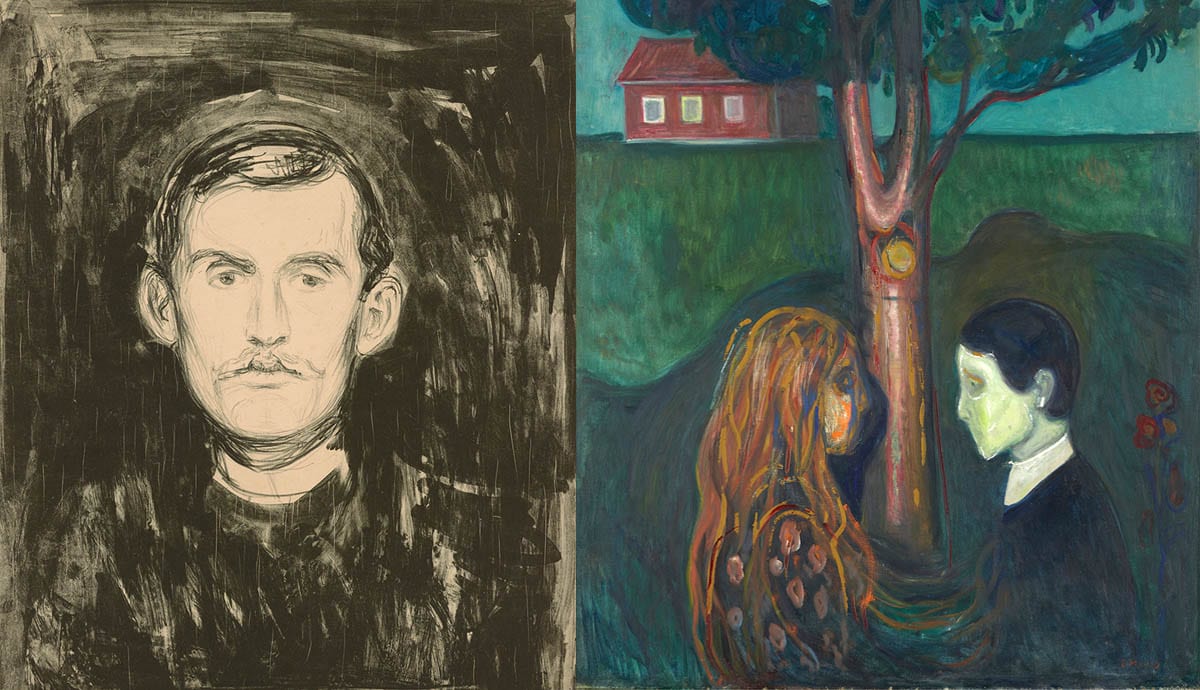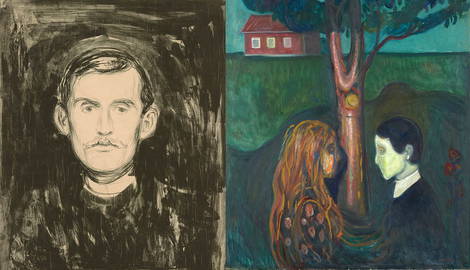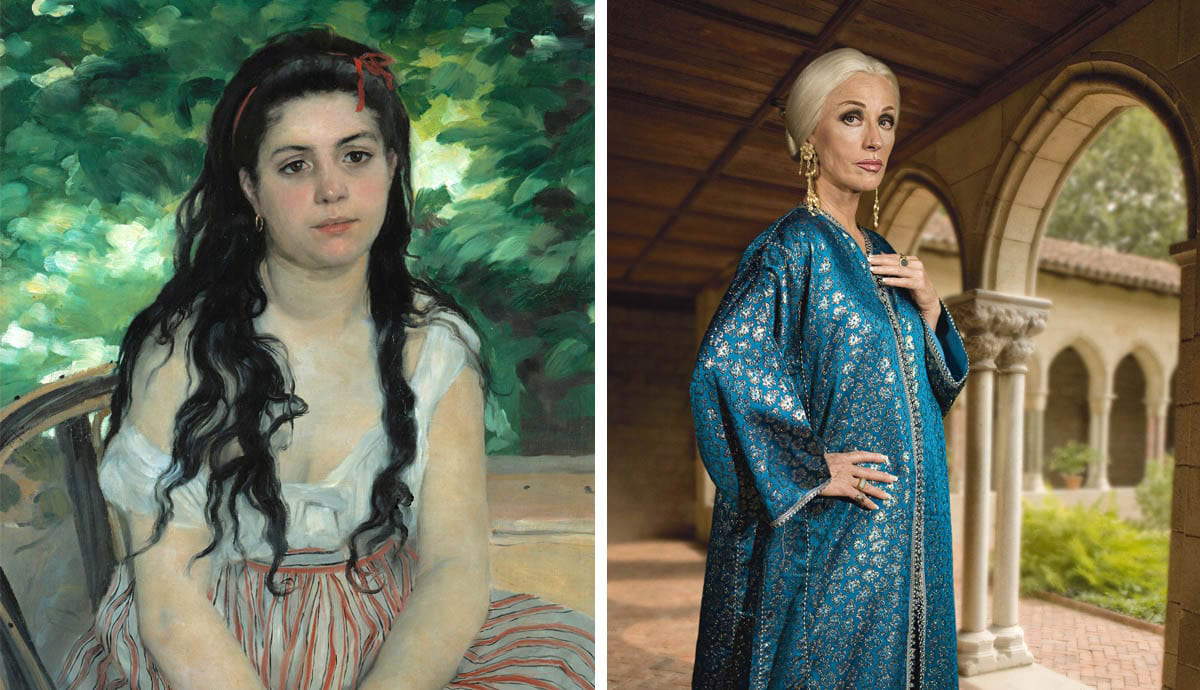
Edvard Munch is remembered as an iconic artist of modern art and expressionism. Many know The Scream for its emotional turmoil that characterized the changing times of the modern era. Similarly, the Frieze of Life offers a first-person reactionary narrative to understand Victorian patriarchy as it apprehensively transitions into the 20th century. Femme fatale was simply the other side of the same coin of first-wave feminism. Ironically, Munch had been coping with his own personal heartbreak from a particularly “vampiric” woman at the time. Which begs the notable question that Oscar Wilde strove to answer in his 1891 essay: does art imitate life, or life imitate art?
Edvard Munch And The Beginning Of The Frieze of Life

The Norwegian artist was born on December 12th of 1863, in the heart of modernizing Europe. At five years of age, Edvard Munch suffers one of his earliest tragedies: the passing of his mother. Much of his early life molded around the intense piety and emotional turbulence of his father. Upon entering the Royal School of Art and Design in 1880, Munch’s artistic career blossoms just as his first secret love affair does in 1885.
One year later, Munch’s work is showcased at the annual Artist’s Autumn Exhibition and turns many heads. The Sick Child strikes the public with mixed reactions but provides Munch with a needed appearance. Later in 1896, he attempts at fame within the Paris art world yet ultimately fails after much previous success. Two years later, Munch begins another romantic relationship, only to be overwhelmed by the same ambivalence that has haunted his associations with women. His work from the Frieze of Life in the 1890s and onward explore these internalized conflicts and personal experiences until they become obsolete in the modern era.
Does Art Imitate Life, Or Life Imitate Art?

Much of Edvard Munch’s artistic career had been clearly associated with his personal life. This growing heartache of his only cemented itself as the Frieze of Life series comes to life. One artwork that turned Munch’s life into a spectacle was Separation. Featured are two figures facing away from each other: a young white woman glowing in a white gown walks down the path, away from a grieving and septic man. He is left behind and looks away as he clutches his heart in pain, while the winds seem to flow with her fleeting presence.
Separation then is the artistic rendition of heartbreak and rejection. Given the appearance of a healthy glow, it is understood that she can live independently of the sickly man. Or perhaps her departure from the relationship is what brought about the man’s ill fate instead. This scene could be what Munch interprets to be the source of man’s imminent suffering as the woman becomes independent of him. In a much grander scheme, Separation embodies the suffrage movement as women become competent and assertive. This phenomenon also becomes the center of attention in other forms of the culture, but most notably in Gothic literature.
Life, Love, And Death

When you think of the vampire figure, what comes to mind? Is it someone who roams the night and drinks blood as sustenance? A popular vampiric figure you might have heard of goes by the name of Dracula; he was also a figment of Bram Stoker’s 1897 novel. More of this notion will be discussed in Edvard Munch’s writings, but two years prior, Vampire makes an appearance. The painting consists of two central figures: a sickly man and a glowing woman. She focuses on their embrace as she buries her face in his neck. His skin is sickly compared to hers as she radiates warmly while a dark outline surrounds them. Yet he does not seem to be pushing away our lady of the night, rather he allows her to hold him.
It is no surprise that the color, red, appears here for its double meaning as blood. The anxiety of women’s capable competence, by voting, manifests in Munch’s portrayal of the vampire: a being that beckons man by the false promise of carnal gratification and affection. Although they seem nestled in a loving manner, the duo’s embrace quickly becomes parasitic. This notion of femme fatale can be seen in poems found in Munch’s sketchbooks, many of which had been associated with the Frieze of Life series.
Writings Over The Years

Edvard Munch becomes infatuated with the idea of “being allowed to sacrifice his soul” to women. However, what happens then if man indulges in his desires for this vampiric and feminine being? Should he surrender himself, their downfall sets into motion the destabilization of assertion, a foundation of patriarchal ideology. In accordance with Freudian psychoanalysis, this poem is saturated with imagery of the female body. Edvard Munch’s protagonist is tempted to sit at his lovers’ “abundant table of love” after she “opens her gates,” only to quickly realize he has been tricked. The food poisons him as the table is not filled with love, but of “death, illness, and venom.”
Munch’s reflections on femme fatale match those of Bram Stoker’s “vampiric” women presented in Dracula, as seen through the example of Lucy’s character. These apparent dangers are written through the rendition of Lucy’s transformation, as the ultimate personification of female competence and autonomy. Yet Edvard Munch’s obsession with this double meaning of female assertion or confidence is mentioned several times in other writings over time as well.

The protagonist reappears when he “leans his head against [his lover’s] breast,” after being beckoned to her embrace. He focuses on the “blood pulsing in her veins” hoping to find peace in her arms. The poem takes a dark turn when she presses “two burning lips against his neck” and sends him into a frozen hypnotic state filled with a deadly desire. The vampire, for both Munch and Stoker’s works, represents the duality of female competence and her sexual assertiveness. Through vampirism, she acts out the phallic nature of control and power that might have been considered a masculine trait within Victorian society.
Frieze of Life, as well as its accompanied writings, consistently touches on ideas of life, love, and death from the male perspective. The 19th-century anxiety then stems from the moment in which her promise of carnal satisfaction ends with his surrendering. Edvard Munch then proposes a sense of imprisonment in order to prevent this terror from manifesting into a horrifying reality, as seen in the Madonna artwork.
The Divine Yet Dangerous Madonna

Another commonly known name of her would be the Virgin Mary of Christianity. The lithograph reminds of these early Renaissance or Byzantium portraits but renders her significance in a differently divine fashion. Edvard Munch’s Madonna elaborates on feminine autonomy as something simultaneously monstrous and holy. She poses languidly in contrast to the infant clutching itself in the corner. Behind her lays the blue and black swirls as well as a red crescent-like shape peeking out from her headspace.
The skeletal infant is minuscule in the overall hierarchy of this piece and therefore establishes the greater importance of the Madonna figure. Her facial expression and body language inform us that she is relaxed, almost as if basking in the hypnotic surroundings that radiate from her. The composition then solicits two possible responses from the viewer: a sublime sense of awe and appraisal, or fearful and threatening repulsion. To calm the latter, Munch imprisons her in a frame of blood and sperm. The sanguine border paves the path for man’s, or the infant’s, reentrance to the Oedipal mother. Madonna would ultimately personify the notion of death within the Frieze of Life.
Edvard Munch’s Angst

Upon the whirlwind of traumatic experiences in his early childhood, compounded with heartbreaks, Edvard Munch eventually creates his most known work to date. The Scream is remembered for its embodiment of the emotional charge of many during Freud, Stoker, and Munch’s lifetime. Women asserting themselves would have been considered a shock to many given the prior societal systems in place for either of the sexes. So much so that not only a notable novelist and psychologist notice but an active artist traveling all over Europe as well. By the time of Munch’s death in 1944, Fauvism and Expressionism situate themselves in the art world, and the suffragette movement had passed all throughout the modern Western world. It would seem that Edvard Munch’s angst for societal change might still be relevant posthumously for some, even today.







